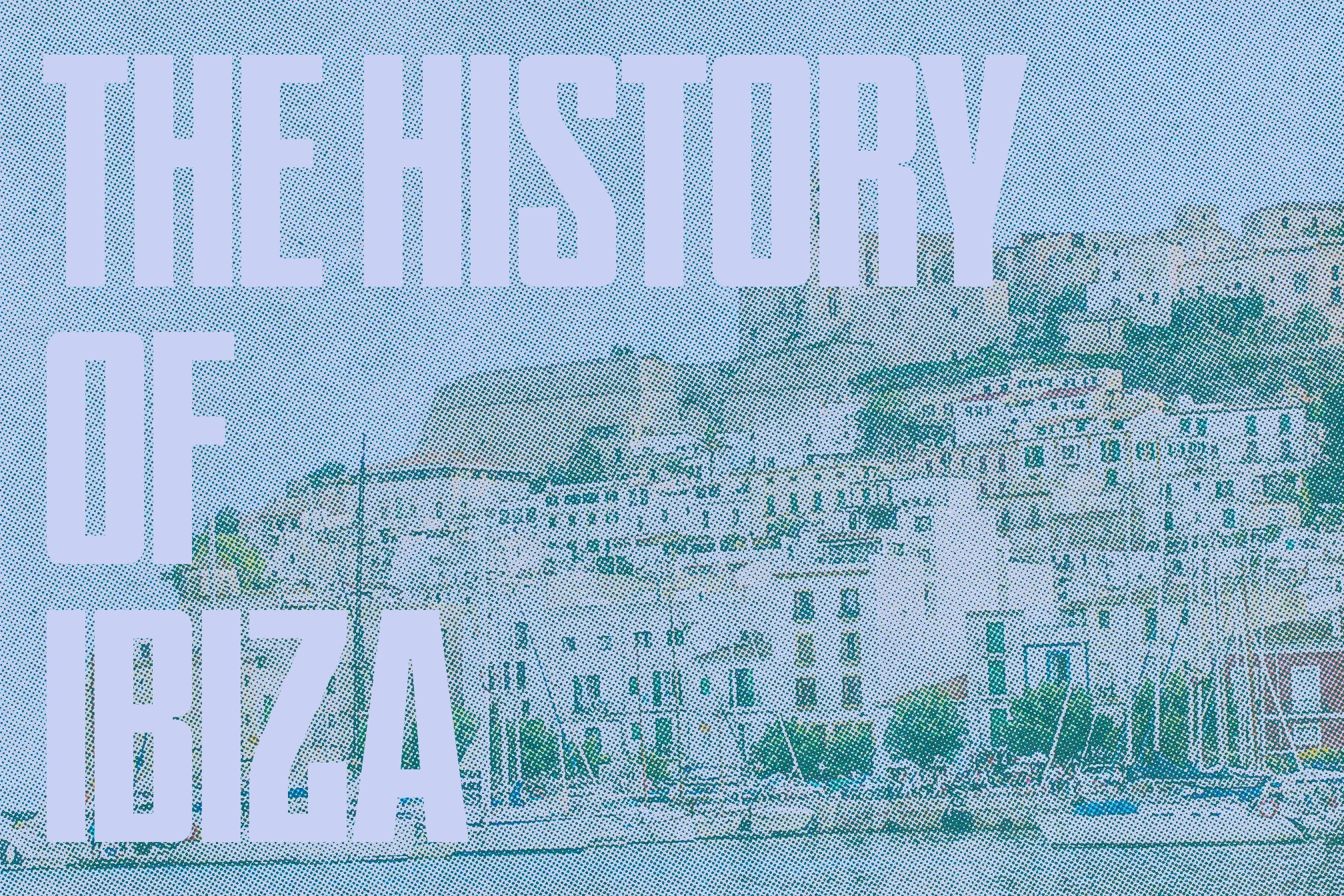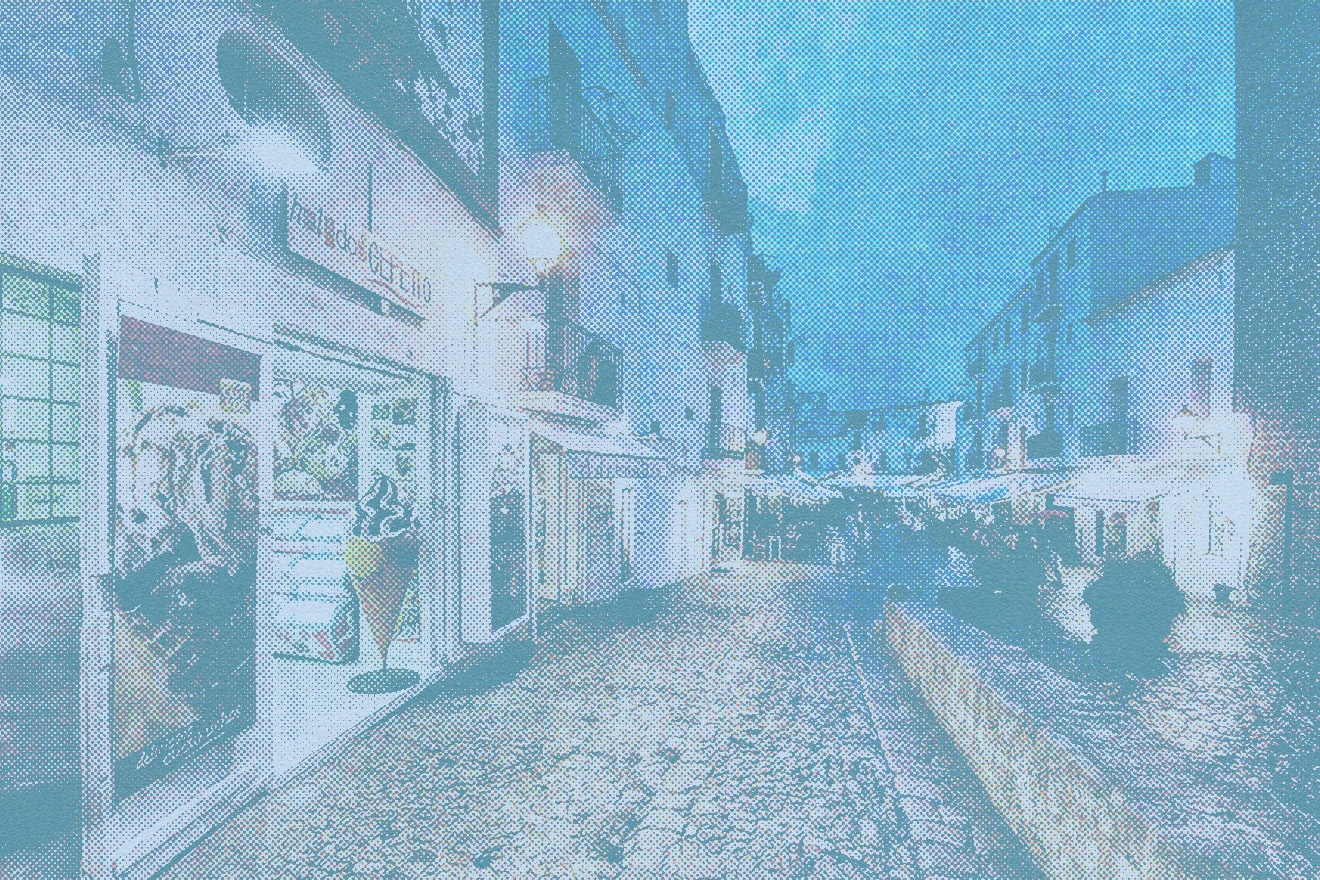 Features
Features
The history of the White Isle: How did Ibiza become a party island?
From the earliest settlers to modern day clubbers, we dive into a potted history of the world-famous party island
Even if you’ve never visited Ibiza, you can probably conjure up a good picture of the party island today: Boozy Brits, dusk ‘til dawn parties, and blazing pyrotechnics at mammoth superclubs - and those are just some of the scenes you’d expect to see on the White Isle in 2024. Modern Ibiza is a well-told tale, but have you ever dived into the history of the White Isle?
Ibiza, which sits just south of its sister island Formentera, is part of the Balearic Islands - a group of islands off the south coast of Spain in the Mediterranean Sea. These islands are one of the few autonomous regions of Spain, where the Catalan language is still widely spoken, and each is governed by the Parliament of the Balearic Islands. Ibiza is the third largest of the islands by area (behind Mallorca and Menorca), though its population of around 150,000 exceeds the latter, with most of its residents based in San Antonio, Ibiza Town, and Santa Eulària des Riu.
Read this next: The history of Ibiza in 100 tracks
From the earliest settlers to modern-day clubbers and main-stage DJs, we dive into a brief history of Ibiza to find out how the White Isle became a world-famous party island. Check it out below.
Early history
It’s generally thought that Ibiza has been inhabited since the stone age, but was formally founded as a port town by the Phoenicians - a civilisation in the Middle East - in 654 BC, where it was named ‘Ibosim’. Due to its isolation in the Mediterranean Sea, Ibiza struggled in trade at this time, dealing in a handful of resources like wool, dye, and salt. Over the next few centuries, Ibiza was invaded again and again, first by the Carthaginians, then the Romans, and later the Vandals and the Byzantines who brought Ibiza, then ‘Yabisah’, under Islamic rule.
After a successful conquest in 1235, a force led by the Crown of Aragon took Ibiza and repopulated the island with Christians from Catalonian territory like Barcelona and Tarragona, renaming the island to ‘Eivissa’ - a name that remains today. In 1555, a fortified town named Dalt Vila was built on the island to protect from pirate attacks (its fort now hosts the annual closing party at IMS). By this time, trade in Ibiza was peaking as it developed into a large, enterprising harbour on the Mediterranean trade route, especially prospering in its trade of salt, or “white gold”, which is thought to have given Ibiza its nickname, the ‘White Isle’.
1940s - 1950s
International tourism began to boom in Ibiza in the 1950s. With the introduction of resorts, hotels, and a regular ferry from mainland Spain, Ibiza became a hotspot for tourists and expats escaping fascism in Europe. The island began to develop with the arrival of creatives, including artists, painters, and writers, who settled in Ibiza following the Spanish Civil War.
1960s - 1970s
With the influx of creatives in Ibiza towards the start of the 1960s came a new wave of hippies who saw the island as a peaceful refuge. Ibiza’s population almost doubled in the ‘60s and ‘70s, owing to development of the island’s airport and its beaches, bringing a flurry of immigration. After the death of Spanish dictator Franco in 1975, Ibizans began speaking Catalan again, and the reintroduction of democracy led to the establishment of the Balearic Islands (Ibiza, Formentera, Mallorca, and Menorca) as an autonomous community.
Read this next: Does hippy Ibiza actually still exist?
Ibiza’s earliest form of nightlife is thought to date back to the hippie movement, who gathered and partied before the introduction of Ibiza’s founding nightclubs in the 1970s. Amidst the tourist boom in the ‘70s, clubs including Pacha, Es Paradís and Ku Club (later Privilege) opened, as well as the seminal open-roof iteration of Amnesia, which was founded in 1976.

1980s - 1990s
In the mid-1980s, the sound of Balearic Beat emerged from clubs like Amnesia, pioneered by the likes of Argentinian artist DJ Alfredo who had emigrated to the White Isle. The genre, influenced by house and disco, became associated with the sound of Ibiza as nightlife began to pick up on the island and DJ culture was popularised. In 1986, Ibizan businessman Pepe Roselló opened Space Ibiza, a seminal open-air club that brought with it later club nights, often running through the early hours until 7:AM.
Read this next: Space forever: Remembering one of Ibiza's most iconic clubs
Pikes Hotel, which opened in 1978 by Tony Pike, also became a legendary spot for hedonism and debauchery, including Freddie Mercury's infamous 41st birthday in 1987, which has been labelled "the most incredible example of excess the Mediterranean island had ever seen."
By the late ‘80s, the Second Summer Of Love was in full swing. Acid house made its way around Europe as the phenomenon spread, reaching artists like Danny Rampling, Nicky Holloway, and Mike Pickering who travelled to Ibiza to check out and become influenced by the emerging club scene. At the end of the ‘90s, DC-10 was founded as an intimate club hosting just 80 people before the introduction of Circoloco parties, which ran every Monday during the summer season. In 1999, UNESCO first recognised Ibiza as a World Heritage Site, famed for its diverse ecosystems and historic Dalt Vila site.
2000s - 2010s
According to a 2021 survey, early 2000s Ibiza is the party era Brits want to revisit most, far surpassing nostalgia for the ‘80s acid house scene. Ibiza entered its golden era in the noughties, becoming a globally renowned nightlife hotspot with the opening of yet more clubs, including Ibiza Rocks where the likes of The Prodigy played, and events such as DC-10’s Circoloco, Amnesia’s Cocoon, and Eden’s Judgement Sundays really hit their stride. DJs including Carl Cox, Danny Tenaglia, Tim Sheridan, and Pete Tong began to hone residencies at certain clubs, becoming synonymous with the parties they would play. In 2007, Ibiza’s annual event International Music Summit was launched, gathering music industry leaders, DJs, and punters from all over the world each year.
Read this next: New documentary featuring Fatboy Slim and Carl Cox chronicles the history of Ibiza
By the 2010s, Ibiza saw a mass increase in tourism with almost six million people travelling through Ibiza Airport in 2012 alone. This huge boost in visitors caused issues on the island such as water shortages and overcrowding, leading the Balearic government to introduce a ‘Sustainable Tourism Tax’ in 2016 to curb such a high influx of visitors and protect the island’s natural and cultural heritage. Two of Ibiza’s most iconic clubs, Space and Privilege, closed down in 2016 and 2019 respectively, marking the end of an era on the White Isle.
Ibiza today
When COVID-19 swept through Europe in 2020, Ibiza’s club scene hit a pause. The island struggled through this time, given that nearly 75% of the island’s population made its income through tourism (clubs, hotels, restaurants, bars, taxis, shops, etc.). When Ibiza emerged on the other side, new bars, retreats, and restaurants opened and Ibiza’s summer season - previously June to September - extended, now running from May to October. Clubs like Ushuaïa, Hï, O Beach, Club Chinois, and Pikes now remain some of the most visited clubs each year, along with original, long-running nightspots like Amnesia and Pacha. It has also just been announced that new club [UNVRS] will open on the former Privilege site, described as the "world's first hyperclub"
Read this next: Can Ibiza survive by building a sustainable future?
With Ibiza back on its feet, the island is now renowned for its commercial club scene, famous gastronomy, idyllic beaches, quaint old town, and of course, its high-end prices. In recent years, Ibiza has put several restrictions in place for misbehaving Brits who arrive in their masses to the island each year, such as alcohol limits at all-inclusive resorts and a clamp down on the sale of alcohol in shops after 9:30PM in San Antonio, and the potential introduction of fines for antisocial behaviour on the island. Earlier this year, a new rule was also brought in asking tourists to provide proof of accommodation on entry into Ibiza or face up to £8,000 in penalties. Despite new rules and restrictions, Ibiza remains a frequently visited destination - almost four million tourists visit Ibiza and its neighbouring island Formentera each year, constituting 84% of the island’s economy.
Gemma Ross is Mixmag's Assistant Editor, follow her on Twitter



